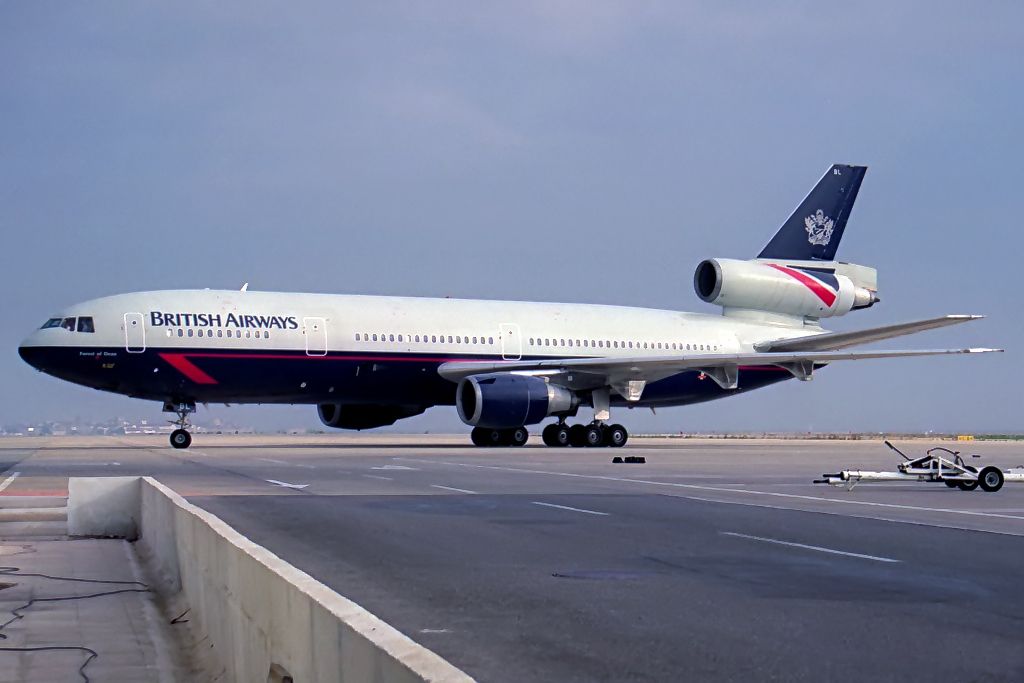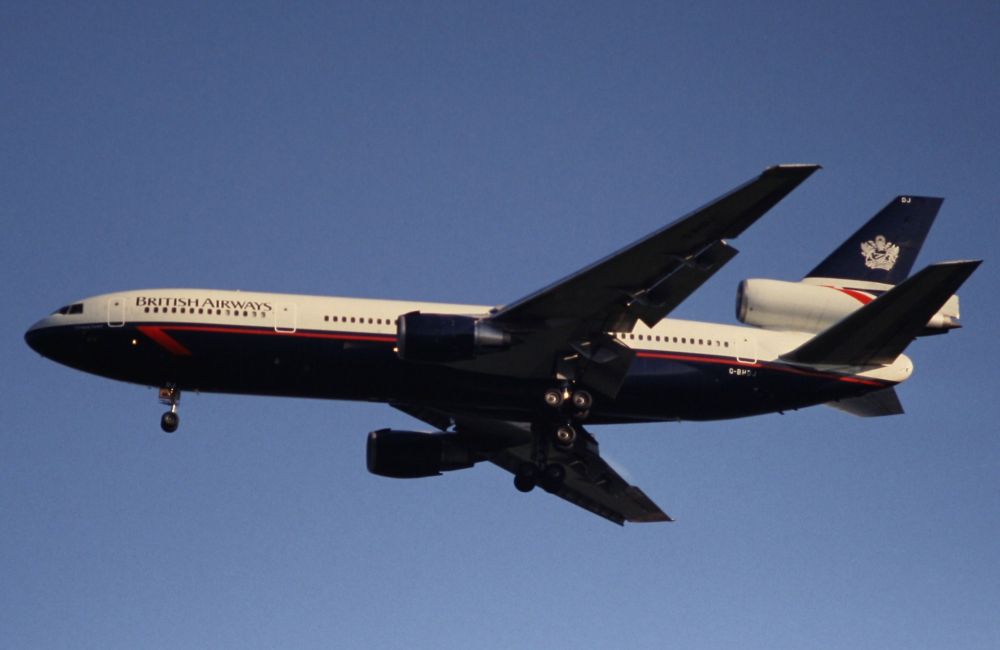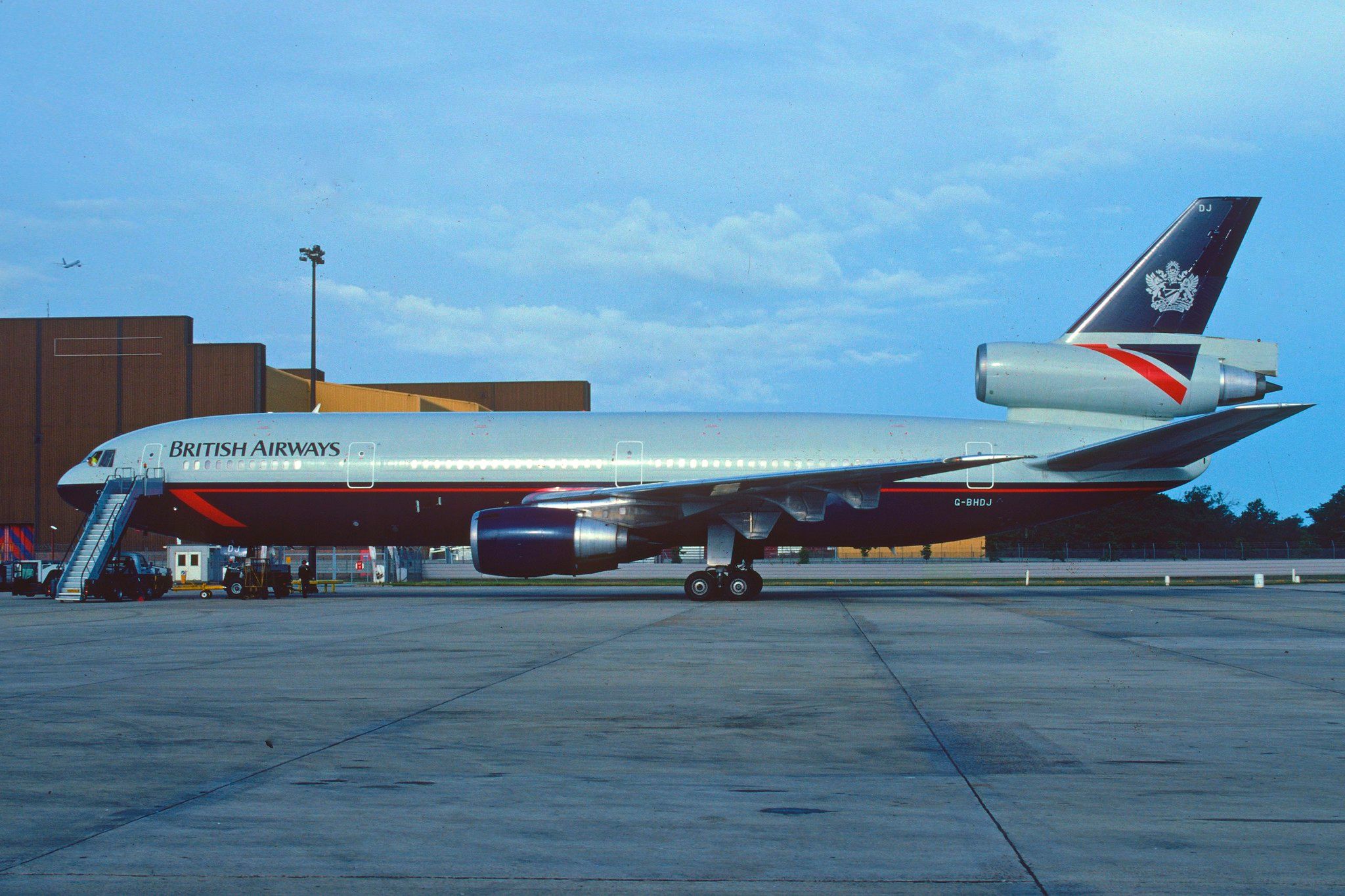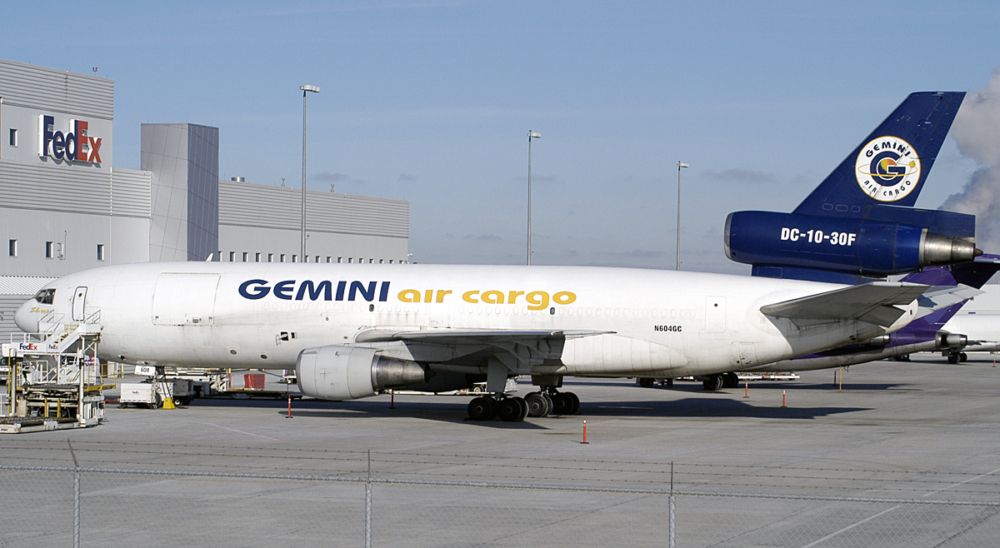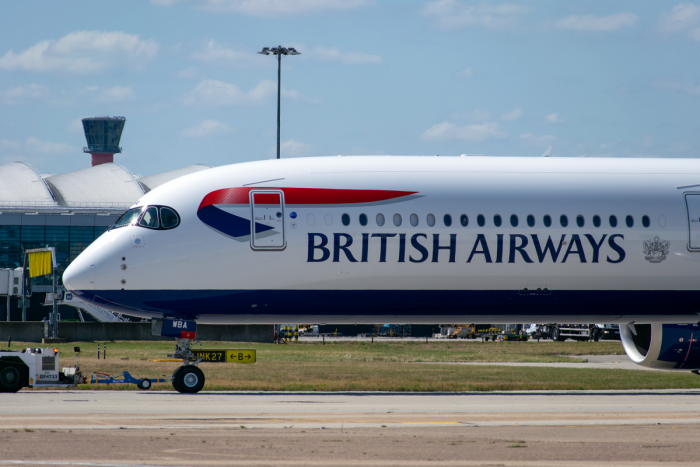UK flag carrier British Airways has flown a diverse variety of widebody aircraft on its long-haul routes over the years. While it has been perhaps best known for its intercontinental Airbus A380 and Boeing 747 operations, the significance of aircraft with less than four engines at the Heathrow-based airline should also not be overlooked. Among these aircraft in years gone by were eight DC-10s.
Inherited from British Caledonian
In 1988, British Airways experienced a significant expansion when it acquired British Caledonian Airways. This saw it inherit aircraft from the latter's fleet, including, according to data from ATDB.aero, eight McDonnell Douglas DC-10-30s trijets. These aircraft officially joined BA's fleet in April 1988, although they retained their existing UK registrations, whereby 'G' was the first letter.
The DC-10-30 was a long-range version of McDonnell Douglas's original DC-10-10. This version, which had additional central landing gear to support the weight of its extra fuel tanks, became the most widely produced variant of the McDonnell Douglas DC-10, with 163 examples produced between 1972 and 1988.
Get the latest aviation news straight to your inbox: Sign up for our newsletters today.
The name game
When the DC-10s in question flew for British Caledonian Airways, certain examples bore names that celebrated Scottish history. Pioneering figures like Sir Alexander Fleming, Robert Burns, Robert The Bruce, Flora MacDonald, and Sir Walter Scott were among those commemorated. Another example was, rather aplty, named after McDonnell founder James Smith "Mac" McDonnell.
However, data from Planespotters.net shows that, upon inheriting the DC-10s, British Airways adopted a new naming system for the aircraft. Specifically, the UK flag carrier named the trijets after forests in the country. These included the Forest of Dean, Epping Forest, Sherwood Forest, Glencap Forest, the Forest of Ae, the New Forest, and Cairn Edward Forest.
Where did they end up?
Although British Airways' DC-10s were not new when the airline inherited them, they proved a valuable workhorse to the UK flag carrier for over a decade, on both European and long-haul routes. However, towards the end of the 1990s, the presence of newer Boeing designs such as the 747-400 and 777 saw the DC-10s phased out alongside another trijet, the Lockheed L-1011 'TriStar.'
Love aviation history? Discover more of our stories here
Five of British Airways' DC-10s left the UK flag carrier's fleet in 1999, after 11 years of service. By this time, they were either approaching 20 years old, or had already surpassed this milestone. As such, it is perhaps unsurprising that their futures were in the cargo sector. After all, Simple Flying has previously noted that many cargo operators favor older aircraft due to their less frequent usage patterns.
Overall, three ex-BA DC-10s joined US freight carrier Gemini Air Cargo in 1999. The other departures that year took one example to Emery Worldwide Airlines, and another to Cargo Lion via Stansborough Investments. A further two DC-10s departed in 2000, with one each joining Emery Worldwide Airlines and fellow US carrier World Airways. 2001 saw British Airways' eighth and final DC-10 leave its fleet.
G-DCIO was the last to go, departing in April that year for World Airways, where it received the registration N48277. Sadly, data from ATDB.aero suggests that none of the eight examples have been preserved after their service life. Five have been scrapped, two are derelict, and one (formerly G-DCIO) was destroyed in April 2004 after suffering a nose landing gear collapse following a runway overshoot.
BA's widebody fleet today
Let's conclude by taking a closer look at which twin-aisle designs British Airways flies today. According to ch-aviation.com, four aircraft families make up this part of its operations, with two being from Airbus. These are the A350-1000 and A380-800, with 13 and 12 examples respectively. Boeing also has two families present.
These are the 777 and 787, with both series having multiple models at BA. Indeed, when it comes to the triple-seven, the UK flag carrier flies 43 777-200Ers and 16 777-300ERs. Meanwhile, British Airways operates all three 'Dreamliner' family models, with 12 787-8s, 18 787-9s, and three 787-10s currently at its disposal.
Did you ever fly on one of British Airways' DC-10s? If so, where did the trijet take you? Let us know your thoughts and experiences in the comments!
Sources: ATDB.aero, ch-aviation.com, Planespotters.net

